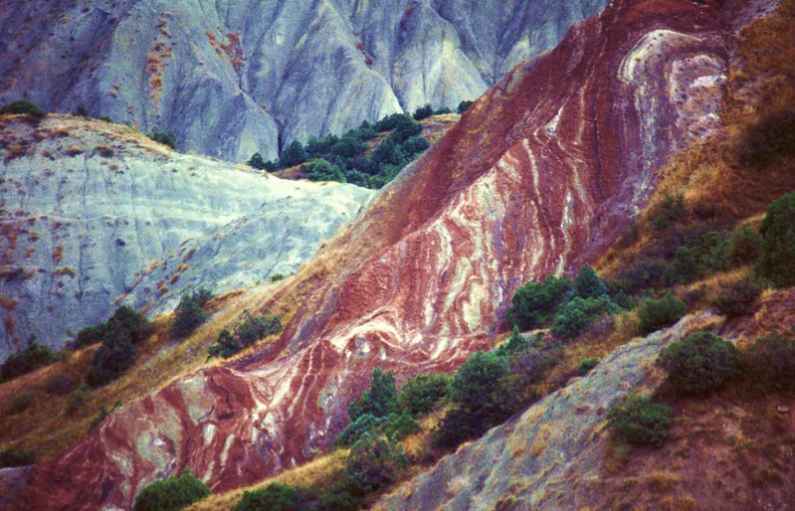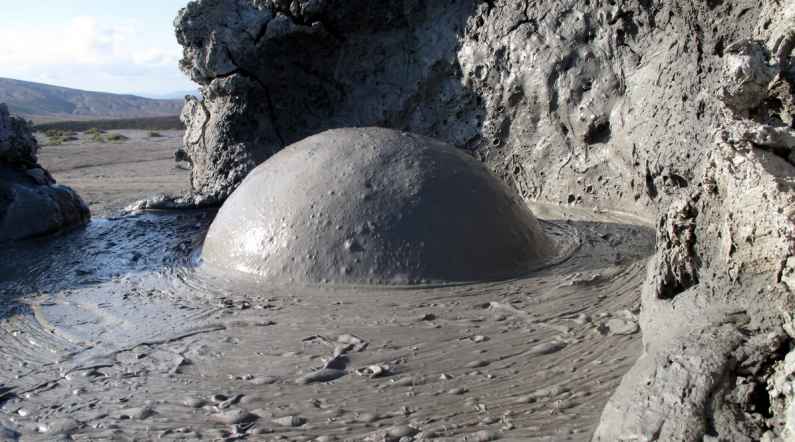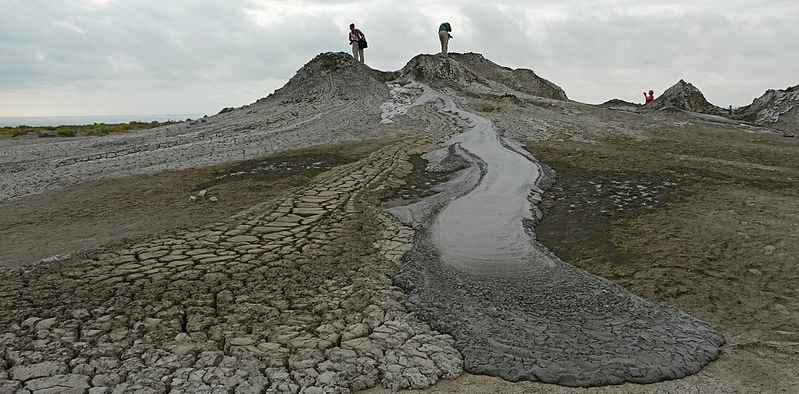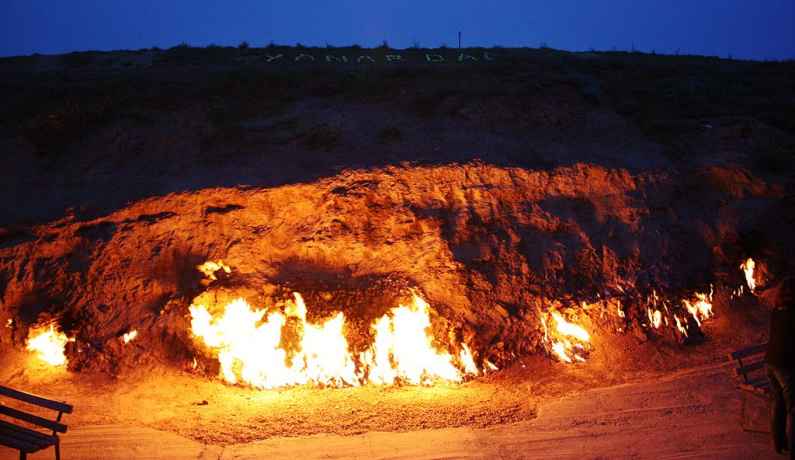3 Reasons For Visiting Fascinating Azerbaijan
A former Soviet republic, Azerbaijan lies between the Caspian Sea and the Caucasus Mountains. The mountains span Asia and Europe, giving Azerbaijan a fascinating culture and history. The capital, Baku, is well known for its medieval architecture and walled Inner City. However, this country has many unique and unusual landscapes to visit. These include the striking Candy Cane Mountains, a series of mud volcanoes and the mysterious Fire Mountain.

Photo Candy Cane Mountains on Wikimedia Commons
1. Candy Cane Mountains, Siyazan
Traveling the highway between Baku and Quba in Azerbaijan presents a remarkable series of colorful peaks in the surrounding landscape. The peaks are found 50 mi from Baku on the E119 highway. The red-and-white striped mountains have been dubbed the Candy Cane Mountains due to their resemblance to the Christmas treat.

Photo by Davidson on Flickr
The peaks are a part of the Great Caucasus mountain range and the color is due to this area’s unique geology. They consist of a type of sedimentary rock that has been made from many layers of rock, piled on top of each other. Geologists say changes in the environment over this period led to the varying mineral composition of the colorful layers. The Candy Cane Mountains also contain belemnites, the fossils of a squid-like creature from the Cretaceous period.
2. Mud Volcanoes of Azerbaijan, Baku
Next on our fascinating Azerbaijan tour, we find out this country is home to almost a third of the world’s mud volcanoes. This causes an unusual and occasionally explosive landscape.
 Photo of mud volcano on Wikimedia Commons Photo of mud volcano on Wikimedia Commons
The mud volcanoes appeared unexpectedly in 2001 when the ground started to move. At the time, this was described by a local as being like an animal trying to get out of the ground. First there was a big explosion, then a huge flame shot out of a hillside. The flame was surrounded by dense, black smoke and then loads of mud started being thrown up into the air. This amazing sight could be seen from 15 km (9 mi) away. The flames carried on burning for three days.
 Photo of mud volcano by Rita Willaert/Flickr Photo of mud volcano by Rita Willaert/Flickr
This was a volcano eruption, but there was no magma or lava, but mud instead. Experts say they are formed where pockets of underground gas find a weak spot in the earth and force their way to the surface. Of the around 1,000 mud volcanoes in the world, 400 are located in this coastal area of Azerbaijan.
3. Yanar Dag (Fire Mountain)
Marco Polo visited the city of Baku in the 13th century and made mention of numerous mysterious flames that could be seen popping up all over the Abseron Peninsula. Since then, the natural flames of Azerbaijan are considered to have played a role in the creation of Zoroastrianism, a mystical faith which centers around ceremonial fire cults that cropped up in the area around 2,000 years ago.
 Photo Fire Mountain on Wikimedia Commons Photo Fire Mountain on Wikimedia Commons
However, the reason for these natural flames is the country’s enormous natural gas reserves. Many of the natural fires did eventually burn out due to a reduction in the underground gas pressure. Of those remaining today, Yanar Dag is arguably the most impressive.
Also known as Fire Mountain, this consists of a 10 m long wall of fire that burns continuously. The sight is best seen at night when tourists and local residents view the scene from a nearby teahouse. There is a local legend that this particular fire was started in the 1950s when a shepherd tossed a cigarette, lighting the flames.
Take in the fascinating and unique landscapes of Azerbaijan on your next vacation, but also visit the beautiful and historic cities along the way! top

|

